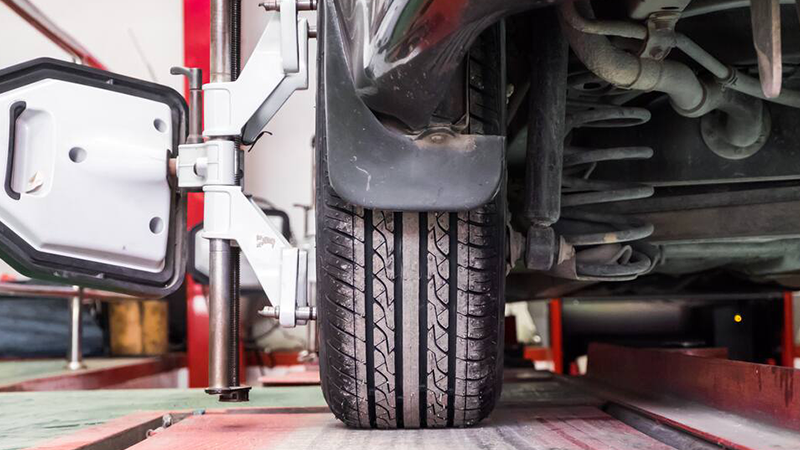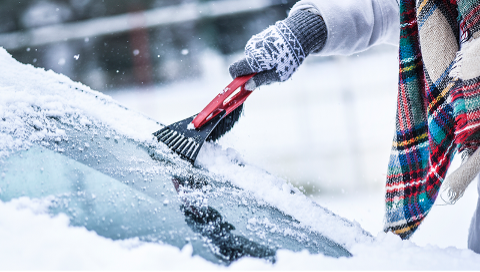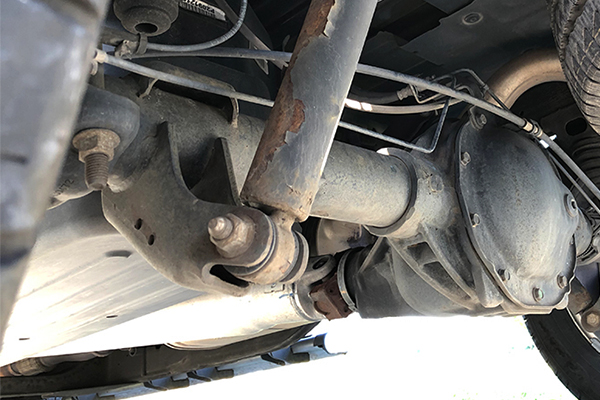Proper vehicle alignment saves money and improves handling.
A four-wheel alignment is an important maintenance item that needs to be performed regularly, saves drivers a significant amount of money over a vehicle’s lifetime, and affects vehicle handling and performance. Too often, however, this maintenance item gets lumped into the category of “recommended vehicle services that just never seem to get done.” You know the ones I’m talking about – shock and strut replacement, washing and waxing, and the list goes on. These maintenance items are often neglected because of cost or drivers’ time constraints, but mainly because some drivers feel they just don’t need to be done. Their philosophy is that the car’s still going to get them from point a to point b regardless of whether it’s aligned.
Before explaining why ignoring the alignment issue is an expensive and potentially unsafe mindset, it helps to understand what alignment is, and isn’t. Have you ever driven down a straight highway and felt the vehicle pulling to one side or another? Are your tires wearing unevenly with more wear on the outside or inside edge or across the tread face? These are signs that the vehicle is out of alignment.
While a vehicle’s wheels may be out of alignment, it isn’t the wheels themselves where the adjustments are being made during an alignment, simply because there’s nothing there to really adjust. Wheels are bolted on the vehicle, tightened down, and that’s pretty much that. What is being adjusted during a realignment is the vehicle’s suspension.
What happens during an alignment?
The three essential, technical elements of vehicle alignment are camber, caster and toe.
1. Camber is the way the tire is angled in or out from the vehicle. If you look at the tires from the front of the vehicle, imagine that the tire’s top or bottom is angled in or out at an extreme angle. That’s camber.
2. To understand toe, imagine you’re floating above the vehicle and looking down on the wheels. The degree to which the wheels turn in or out is toe. You can also simply look down at your own feet and pretend they're your front wheels. Turning your toes in towards each other or out away from each other mimics varying toe angles your vehicle might have.
3. Caster (or caster angle) is more difficult to envision and explain. It refers to the angle of the steering axis and plays an important role in steering and handling. The easiest way to understand how the caster angle affects your steering and vehicle stability is to picture the relationship between a bicycle's front wheel and the handle bars. Imagine trying to steer a bike if the handle bars were straight above the center of the wheel. Now imagine that the handle bars are set back a bit, behind the wheel. You can probably imagine that the latter setup is much more stable. Caster angle on vehicles is a similar concept but with more parts involved.
Modern vehicles in particular have specific camber, toe, and caster specs that need to be maintained in order for the vehicle to handle properly, and so that tires don’t wear out prematurely because of uneven wear patterns. Unfortunately, vehicle alignment can be thrown out of whack easily by the simple act of hitting a big pothole or the curb. Even in the absence of any adverse events, alignment still changes over time. That’s why it’s important to have the vehicle realigned on a regular basis.
Not sure who to turn to for your alignment? Use Advance's Find A Mechanic tool to find a certified technician near you.
When should I get an alignment?
Many experts recommend an alignment every 15,000 miles or 12 months, whichever comes first. Some shops offer “lifetime alignments.” This doesn’t mean that the alignment is guaranteed to last forever, because it can’t, but rather that they will realign the vehicle at no cost in the future if it ever needs it. It will. Alignments, particularly on today’s vehicles, can’t be performed just anywhere, nor can someone tell if a vehicle is aligned properly simply by eyeballing it. What’s required is a specialized alignment machine or rack that measures wheel angles precisely using lasers, and access to the vehicle manufacturer’s alignment specs for the vehicle being aligned. Based on those results, technicians make adjustments to the suspension to properly align the wheels.
Most tire shops or mechanics that sell a lot of tires will have the equipment needed to perform alignments. A good time to have a vehicle alignment is when new tires are being installed. Doing so helps protect the sizable investment that a set of tires represents today. And finally, there’s the option of having a two- or four-wheel alignment performed. Talk with your technician or tire professional to about what’s the best option for your particular vehicle and situation.
Alignments aren’t free, but in the long run, they more than pay for themselves because they increase tire life and improve fuel efficiency.
When you need tire-care products or anything vehicle-related, turn to Advance Auto Parts first. Buy online, pick up in store and get back to the garage.








